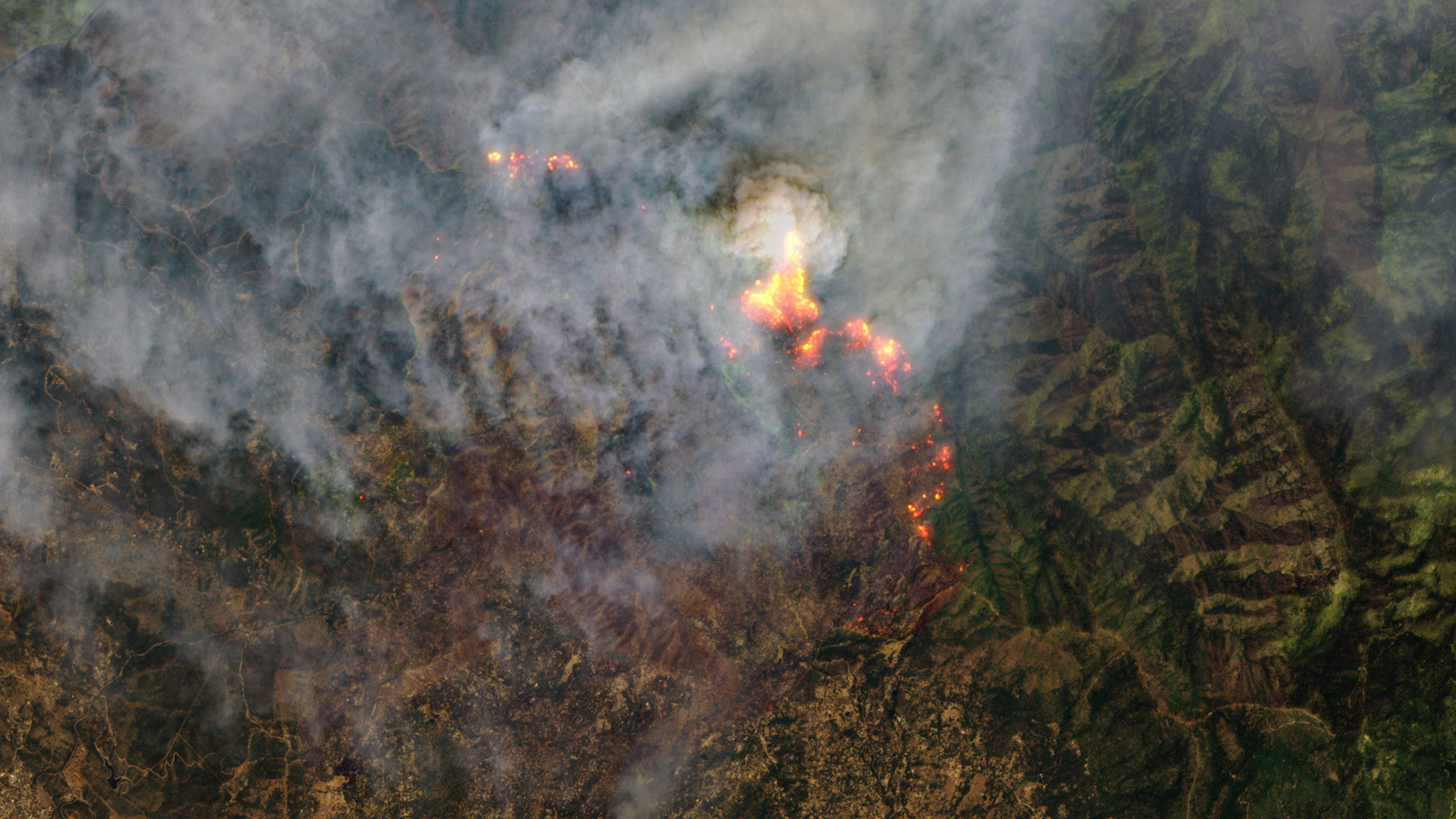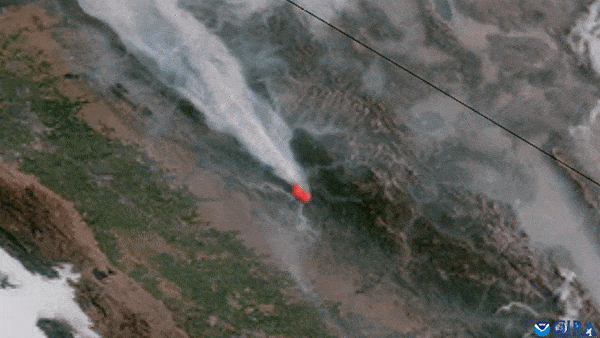Satellites watch raging wildfire threatening California's Yosemite National Park
The blaze is a result of changes triggered by climate change, expert says.
Multiple satellites are monitoring a ferocious wildfire that erupted in the vicinity of California's famous Yosemite National Park and has devoured over 25 square miles (65 square kilometers) of land within a few days.
NASA's Earth-observing Landsat satellites watched what is dubbed the Oak Fire at various stages of development after it ignited in Mariposa County, west of the national park, on Friday (July 22). The GOES-17 satellite, operated by the U.S. National Oceanic and Atmospheric Administration (NOAA) has also observed the fire, as has Europe's Sentinel-2 satellite.
Strong winds and extremely dry conditions fueled the spread of the blaze, which has forced more than 3,000 people out of their homes, according to The Guardian. The Oak Fire is the second fire threatening the precious natural area this month, after the smaller Washburn Fire, which was successfully contained.
Related: The devastating wildfires of 2021 are breaking records and satellites are tracking it all

"By recent standards, both of these ongoing fires are actually on the small side," Daniel Swain, a climatologist at the University of California, Los Angeles, said in a NASA statement. "Winds have been pretty weak and typical for this time of year, but the Oak Fire has still managed to evade control due to extreme vegetation dryness over the long term and hot conditions in the short term."
Climate change, Swain added, is to blame for the situation, as it causes "long-term aridification" and supercharges "the intensity of shorter-term droughts" in the region.
"It is drying out vegetation well beyond historically observed levels and greatly increasing the flammability of entire landscapes," Swain said. "This leads to more severe fires that tend to burn hotter, spread faster and cause more harm than lower-intensity fires."
Get the Space.com Newsletter
Breaking space news, the latest updates on rocket launches, skywatching events and more!
According to the California Department of Forestry and Fire Protection, firefighters managed to prevent further spread of the fire on Monday (July 25) by dropping 300,000 gallons (1,100,100 liters) of water on the blaze from helicopters.
"The fire is moving in a northeast direction and fire crews are working aggressively using bulldozers, hand crews and aircraft," the department said in a statement.
The frequency and intensity of summer wildfires goes hand in hand with the warming climate and the frequency of heatwaves, experts say. In several European countries including France, Spain and Greece, devastating wildfires broke out in July during a record-breaking heatwave that exacerbated already dry conditions. Intense wildfires have also been burning in Alaska and Siberia, sparking concerns about permafrost thawing and the release of greenhouse gases that can further contribute to the devastating warming.

The 2021 summer wildfire season in the Northern Hemisphere was one of the most vicious on record, with uncontrolled fires in Siberia producing record-breaking levels of carbon emissions. In the U.S., California's Dixie Fire, the worst blaze in the state's history, raged for three months, destroying 1,505 square miles (3,900 square kilometers) of land. So far, the 2022 Northern Hemisphere wildfire season, despite the recent outbursts, appears more moderate.
"In recent summers we have observed large-scale and persistent wildfires around the Northern Hemisphere, and we are already closely monitoring the fires which have developed through the spring and early summer," Mark Parrington, Senior Scientist and wildfire expert at the European environmental program Copernicus said in a recent report about the 2022 fire season. "So far this summer we have been seeing fairly typical trends, other than in New Mexico and Alaska."
Follow Tereza Pultaroca on Twitter @TerezaPultarova. Follow us on Twitter @Spacedotcom and on Facebook.
Join our Space Forums to keep talking space on the latest missions, night sky and more! And if you have a news tip, correction or comment, let us know at: community@space.com.

Tereza is a London-based science and technology journalist, aspiring fiction writer and amateur gymnast. Originally from Prague, the Czech Republic, she spent the first seven years of her career working as a reporter, script-writer and presenter for various TV programmes of the Czech Public Service Television. She later took a career break to pursue further education and added a Master's in Science from the International Space University, France, to her Bachelor's in Journalism and Master's in Cultural Anthropology from Prague's Charles University. She worked as a reporter at the Engineering and Technology magazine, freelanced for a range of publications including Live Science, Space.com, Professional Engineering, Via Satellite and Space News and served as a maternity cover science editor at the European Space Agency.
